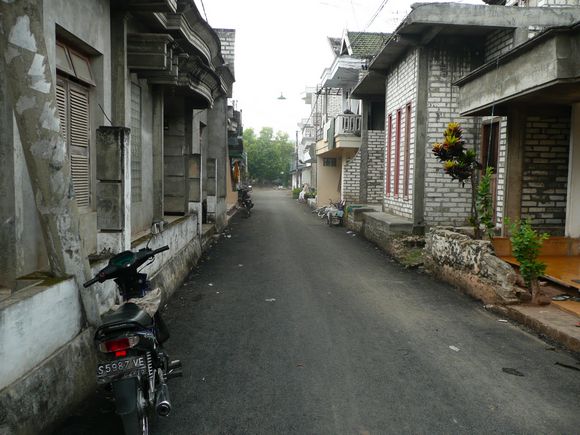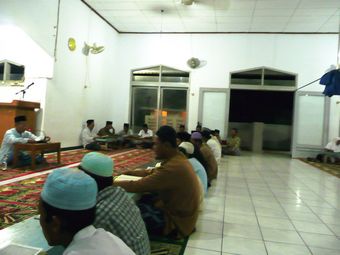Koran SINDO

Berdirinya
Negara Islam Irak dan Syria (NIIS) atau Islamic State of Irak and Syria
(ISIS) pada April 2013 telah menimbulkan kontroversi di kalangan umat
Islam sedunia.
Ada yang kemudian tertarik dan bergabung, namun banyak pula yang menentang karena dianggap tidak mewakili semangat dan karakter Islam sebagai penyebar rahmat bagi semesta. ISIS dianggap sebagai anak kandung Al-Qaeda yang menebarkan ketakutan dan terorisme bagi masyarakat dunia.
Kehadirannya mencoreng cita dan citra Islam yang mengajarkan hidup rukun dan damai. Tidak tanggung-tanggung, ISIS bahkan mendeklarasikan dirinya sebagai kekhalifahan Islam yang berpretensi sebagai pemimpin Islam sedunia. Untuk mengetahui lebih jauh apa makna dan sejarah kekhalifahan dalam Islam, saya tergerak mengontak beberapa teman yang secara intelektual memiliki pengetahuan cukup, bahkan otoritatif, untuk membahas asal-usul pemerintahan politik dalam Islam.
Lalu dikaitkan, bagaimana mestinya membangun hubungan antara ide kekhalifahan dan negara Indonesia yang berdasarkan Pancasila. Akhirnya terbitlah buku Kontroversi Khilafah dengan subjudul, Islam, Negara, dan Pancasila, diterbitkan oleh Mizan (2014) setebal 280 halaman, menghimpun pemikiran dari 13 penulis. Saya berharap buku ini akan menjadi bahan pengantar diskusi yang cerdas bagi mereka yang prokhilafah dan yang antikhilafah pada era sekarang ini.
Bagi yang tidak setuju, mereka berpandangan bahwa khilafah yang pernah hidup pada abad lampau itu tak lagi relevan pada zaman modern. Hanya empat kekhalifahan sepeninggal Rasulullah yang masih teguh memegang nilai-nilai agama. Saat itu pun, yaitu pada masa dua khalifah terakhir, terjadi perang saudara sesama muslim karena dipicu persaingan ideologi dinastiisme.
Kemunculan Mazhab Sunni dan Syiah pun tak luput dari pengaruh persaingan perebutan kekuasaan politik yang melibatkan pembenaran keagamaan pasca-Rasulullah. Dengan kata lain, berbagai mazhab keagamaan yang sekarang bertikai semua itu produk sejarah pasca- Rasulullah.
Jadi sesungguhnya umat Islam Indonesia tidak memiliki agenda mempertahankan kekhalifahan atau kesultanan mengingat para sultan di Indonesia justru melebur menjadi sponsor dan pejuang bagi lahir dan tegaknya negara Republik Indonesia. Dalam berbagai seminar internasional seringkali muncul pujian pada Indonesia, jumlah umat Islamnya yang jauh lebih besar dari dunia Arab bisa bersatu dalam rumah bangsa dan negara Indonesia.
Sementara di Arab, mereka terbagi lebih dari 20 negara di bawah kekuasaan sultanisme-dinastiisme. Di Timur Tengah, kesamaan bahasa, agama, dan daratan tidak berarti menjadi ikatan kesatuan negara dan bangsa. Dalam kaitan ini, menjadi logis jika negara Israel semakin berjaya meski Palestina teriak-teriak minta tolong akibat agresi Israel mengingat sesama negara Arab juga saling bertikai.
Idealnya, jika berdiri khalifah Islam sebagai pusat pemerintahan Islam sedunia, betapa besar dan hebatnya dunia Islam. Tetapi, rasanya, itu sebuah utopia belaka. Jangankan sedunia, di dunia Arab tempat lahir Islam saja mereka bertikai. Benarkah ada doktrin sistem pemerintahan Islam tunggal dalam ajaran Islam?
Para intelektual dan ulama mengatakan tidak ada, sebagaimana dikutip dalam buku Kontroversi Khilafah. Salah satu keputusan Munas NU pada 1-2 November 2014 menyatakan, Islam tidak menentukan apalagi mewa-jibkan suatu bentuk negara dan sistem pemerintahan tertentu bagi para pemeluknya.
Umat diberi kewenangan sendiri untuk mengatur dan merancang sistem pemerintahan sesuai tuntutan perkembangan kemajuan zaman dan tempat (hal.149). Prof Ahmad Syafii Maarif, mantan ketua Muhammadiyah, menulis testimoni untuk buku ini: Sebutan negara Islam untuk Indonesia yang plural tidak lagi diperlukan. Yang terpenting, moral Islam dapat menyinari masyarakat luas melalui perkawinan perangkat hukum Islam dengan sistem hukum nasional melalui proses demokratisasi.
Demikianlah, buku ini menyajikan sejarah kelahiran kekhalifahan dalam sejarah Islam dan berbagai silang pendapat para ulama dan intelektual Islam, terutama mengenai formula hubungan agama dan negara. Untuk konteks Indonesia, kemunculan ideologi Pancasila dinilai sebagai ijtihad politik yang jenius dan bijak, yang menetapkan Indonesia sebagai negara yang bertuhan, sementara rakyatnya diberi kebebasan memilih agama dan kepercayaannya masing-masing.
Agama memerlukan perlindungan dan fasilitas negara, di pihak lain negara memerlukan landasan dan dukungan moral dari agama serta partisipasi umat beragama untuk memajukan bangsa dan negaranya. Yang masih belum mapan adalah tradisi membedakan dan menjaga etika pribadi, komunal, dan publik. Ruang publik itu milik bersama, apa pun etnis dan keyakinan agama seseorang.
Ruang publik mesti dijaga bersama agar nyaman dan damai untuk dihuni bersama. Tetapi, seringkali kelompok etnis dan agama menjarah dan mengganggu ruang publik yang menjadi tugas dan tanggung jawab negara untuk menjaganya.
Jika negara tidak hadir mengamankan, sementara kekuatan komunal etnis atau agama agresif menjarah ruang publik, ini akan merongrong keindahan dan eksistensi bangsa dan negara Indonesia yang plural. Kita jaga keadilan dalam konteks kebinekaan, namun mesti solid dan kompak menjaga keikaan berbangsa dan bernegara.
(ars)
http://nasional.sindonews.com/read/933304/18/kontroversi-khilafah-1417744273
Jum'at, 5 Desember 2014 − 08:51 WIB

PROF DR Komaruddin Hidayat Rektor Universitas Islam Negeri (UIN) Syarif Hidayatullah @komar_hidayat
Ada yang kemudian tertarik dan bergabung, namun banyak pula yang menentang karena dianggap tidak mewakili semangat dan karakter Islam sebagai penyebar rahmat bagi semesta. ISIS dianggap sebagai anak kandung Al-Qaeda yang menebarkan ketakutan dan terorisme bagi masyarakat dunia.
Kehadirannya mencoreng cita dan citra Islam yang mengajarkan hidup rukun dan damai. Tidak tanggung-tanggung, ISIS bahkan mendeklarasikan dirinya sebagai kekhalifahan Islam yang berpretensi sebagai pemimpin Islam sedunia. Untuk mengetahui lebih jauh apa makna dan sejarah kekhalifahan dalam Islam, saya tergerak mengontak beberapa teman yang secara intelektual memiliki pengetahuan cukup, bahkan otoritatif, untuk membahas asal-usul pemerintahan politik dalam Islam.
Lalu dikaitkan, bagaimana mestinya membangun hubungan antara ide kekhalifahan dan negara Indonesia yang berdasarkan Pancasila. Akhirnya terbitlah buku Kontroversi Khilafah dengan subjudul, Islam, Negara, dan Pancasila, diterbitkan oleh Mizan (2014) setebal 280 halaman, menghimpun pemikiran dari 13 penulis. Saya berharap buku ini akan menjadi bahan pengantar diskusi yang cerdas bagi mereka yang prokhilafah dan yang antikhilafah pada era sekarang ini.
Bagi yang tidak setuju, mereka berpandangan bahwa khilafah yang pernah hidup pada abad lampau itu tak lagi relevan pada zaman modern. Hanya empat kekhalifahan sepeninggal Rasulullah yang masih teguh memegang nilai-nilai agama. Saat itu pun, yaitu pada masa dua khalifah terakhir, terjadi perang saudara sesama muslim karena dipicu persaingan ideologi dinastiisme.
Kemunculan Mazhab Sunni dan Syiah pun tak luput dari pengaruh persaingan perebutan kekuasaan politik yang melibatkan pembenaran keagamaan pasca-Rasulullah. Dengan kata lain, berbagai mazhab keagamaan yang sekarang bertikai semua itu produk sejarah pasca- Rasulullah.
Jadi sesungguhnya umat Islam Indonesia tidak memiliki agenda mempertahankan kekhalifahan atau kesultanan mengingat para sultan di Indonesia justru melebur menjadi sponsor dan pejuang bagi lahir dan tegaknya negara Republik Indonesia. Dalam berbagai seminar internasional seringkali muncul pujian pada Indonesia, jumlah umat Islamnya yang jauh lebih besar dari dunia Arab bisa bersatu dalam rumah bangsa dan negara Indonesia.
Sementara di Arab, mereka terbagi lebih dari 20 negara di bawah kekuasaan sultanisme-dinastiisme. Di Timur Tengah, kesamaan bahasa, agama, dan daratan tidak berarti menjadi ikatan kesatuan negara dan bangsa. Dalam kaitan ini, menjadi logis jika negara Israel semakin berjaya meski Palestina teriak-teriak minta tolong akibat agresi Israel mengingat sesama negara Arab juga saling bertikai.
Idealnya, jika berdiri khalifah Islam sebagai pusat pemerintahan Islam sedunia, betapa besar dan hebatnya dunia Islam. Tetapi, rasanya, itu sebuah utopia belaka. Jangankan sedunia, di dunia Arab tempat lahir Islam saja mereka bertikai. Benarkah ada doktrin sistem pemerintahan Islam tunggal dalam ajaran Islam?
Para intelektual dan ulama mengatakan tidak ada, sebagaimana dikutip dalam buku Kontroversi Khilafah. Salah satu keputusan Munas NU pada 1-2 November 2014 menyatakan, Islam tidak menentukan apalagi mewa-jibkan suatu bentuk negara dan sistem pemerintahan tertentu bagi para pemeluknya.
Umat diberi kewenangan sendiri untuk mengatur dan merancang sistem pemerintahan sesuai tuntutan perkembangan kemajuan zaman dan tempat (hal.149). Prof Ahmad Syafii Maarif, mantan ketua Muhammadiyah, menulis testimoni untuk buku ini: Sebutan negara Islam untuk Indonesia yang plural tidak lagi diperlukan. Yang terpenting, moral Islam dapat menyinari masyarakat luas melalui perkawinan perangkat hukum Islam dengan sistem hukum nasional melalui proses demokratisasi.
Demikianlah, buku ini menyajikan sejarah kelahiran kekhalifahan dalam sejarah Islam dan berbagai silang pendapat para ulama dan intelektual Islam, terutama mengenai formula hubungan agama dan negara. Untuk konteks Indonesia, kemunculan ideologi Pancasila dinilai sebagai ijtihad politik yang jenius dan bijak, yang menetapkan Indonesia sebagai negara yang bertuhan, sementara rakyatnya diberi kebebasan memilih agama dan kepercayaannya masing-masing.
Agama memerlukan perlindungan dan fasilitas negara, di pihak lain negara memerlukan landasan dan dukungan moral dari agama serta partisipasi umat beragama untuk memajukan bangsa dan negaranya. Yang masih belum mapan adalah tradisi membedakan dan menjaga etika pribadi, komunal, dan publik. Ruang publik itu milik bersama, apa pun etnis dan keyakinan agama seseorang.
Ruang publik mesti dijaga bersama agar nyaman dan damai untuk dihuni bersama. Tetapi, seringkali kelompok etnis dan agama menjarah dan mengganggu ruang publik yang menjadi tugas dan tanggung jawab negara untuk menjaganya.
Jika negara tidak hadir mengamankan, sementara kekuatan komunal etnis atau agama agresif menjarah ruang publik, ini akan merongrong keindahan dan eksistensi bangsa dan negara Indonesia yang plural. Kita jaga keadilan dalam konteks kebinekaan, namun mesti solid dan kompak menjaga keikaan berbangsa dan bernegara.
(ars)
http://nasional.sindonews.com/read/933304/18/kontroversi-khilafah-1417744273





















